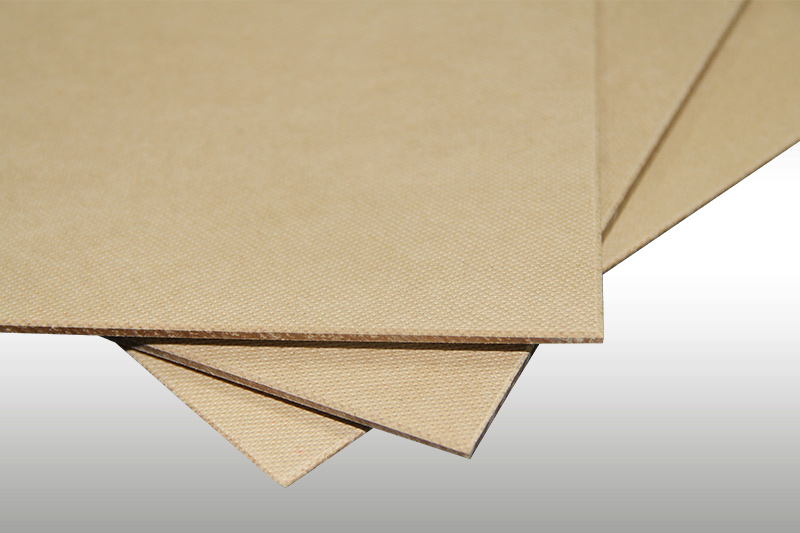Transformer Pressboard Introduction Transformer Insulating Pressboard is a critical insulating material used i...
Transformer Insulating Pressboard is a critical insulating material used inside power transformers. It is manufactured from wood fibers (e.g., sulfate wood pulp) through high-temperature, high-pressure molding and chemical treatment, offering excellent electrical insulation and mechanical strength. Its primary functions include:
Electrical Insulation: Isolating windings and cores at different voltage levels.
Structural Support: Securing winding positions and withstanding electromagnetic and mechanical stresses.
Thermal Management: Collaborating with transformer oil to form heat dissipation channels.
Applications: Widely used in oil-immersed transformers for interlayer winding insulation, lead support, insulating cylinders, spacers, and other components.

High Dielectric Strength:Typical value: 10–25 kV/mm (dependent on thickness and density), ensuring reliability in high-voltage environments.
Superior Mechanical Performance:
Tensile strength: Longitudinal ≥80 MPa, transverse ≥40 MPa (higher after densification).
Compressive strength: Densified pressboard exceeds 200 MPa, suitable for load-bearing structures.
Thermal Resistance:
Thermal class: Class A (105°C); modified variants may reach Class E (120°C).
Long-term operating temperature: 90–100°C (in oil-immersed conditions).
Oil Absorption and Impregnation:
Oil absorption rate: 20–30%, synergizing with transformer oil to enhance insulation.
Environmental Compatibility:
Biodegradable; some products comply with RoHS standards.
Process Adaptability:
Can be punched, laminated, or bent; supports customized designs.
| Parameter | Typical Range/Requirement | Test Standard | Impact on Application |
|---|---|---|---|
| Dielectric Strength | 10–25 kV/mm (1mm thickness) | IEC 60641 | Determine insulation level, high voltage requires high dielectric strength |
| Density | 0.9–1.3 g/cm³ | ISO 534 | High density → high mechanical strength, low oil absorption |
| Moisture Content | ≤5% (as manufactured) | ISO 287 | Excess moisture causes partial discharge; requires drying |
| Tensile Strength | Longitudinal ≥80 MPa, transverse ≥40 MPa | ISO 1924 | High longitudinal strength for winding fixation |
| Ash Content | ≤0.5% | ISO 2144 | Excessive impurities degrade insulation |
| pH Value | 6.5–8.5 | TAPPI T529 | Prevents acidic corrosion of metal parts |
| Thermal Shrinkage | ≤0.5% (105°C, 24h) | IEC 60819 | Ensures dimensional stability at high temperatures |

1.Voltage Level Compatibility
Low-voltage transformers (<35kV): Use standard pressboard (1–3mm thickness, dielectric strength ≥15kV/mm).
High-voltage transformers (≥110kV): Opt for high-density pressboard (1.2–1.3g/cm³, 3–8mm thickness, dielectric strength ≥20kV/mm); laminated structures may be required.
2.Mechanical Requirements
Spacers/Support Strips: Prioritize densified pressboard with high compressive strength (≥150MPa).
Insulating Cylinders/End Rings: Balance tensile strength (longitudinal ≥100MPa) and flexibility.
3.Thermal Class Suitability
Standard oil-immersed transformers: Class A (105°C) suffices.
High-temperature applications (e.g., tropical regions): Use modified pressboard (Class E, 120°C) or heat-resistant coatings.
4.Environmental Adaptability
High-humidity environments: Select low-hygroscopicity pressboard (moisture ≤3%) or pre-dried variants.
Eco-friendly requirements: Choose halogen-free, recyclable pressboard (compliant with IEC 61249).
5.Process Compatibility
Automated winding equipment: Requires low shrinkage (≤0.3%) and high dimensional stability.
Oil impregnation: Use high-porosity pressboard (oil absorption ≥25%) for faster impregnation.
6.Supplier Qualifications
Certifications: ISO 9001, IEC 60641, UL certification.
Customization: Support for laser-cut custom shapes.
7.Cost Optimization
Standard models: Use common thicknesses (e.g., 1.5/3.0/6.0mm) to reduce costs.
Hybrid designs: Combine high-grade pressboard with standard grades elsewhere.
500kV EHV Transformer: Utilizes 6mm thick laminated high-density pressboard (density 1.25g/cm³, dielectric strength 22kV/mm), with epoxy-resin-reinforced pressboard for end insulation.
Offshore Wind Power Transformer: Employs modified pressboard with low moisture (≤3%) and salt spray-resistant treatment.
Storage: Temperature 20–30°C, humidity <50%, elevated on pallets to avoid ground contact.
Pre-processing: Vacuum drying at 110°C for 24 hours to remove residual moisture.
Failure Modes: Monitor partial discharge and carbonization via regular oil chromatography.
By systematically evaluating voltage, mechanical, environmental, and cost factors, precise selection ensures long-term transformer reliability. Validate choices using design parameters and supplier documentation.
If you are interested in our products,, please send us a message and we will contact you as soon as we receive it. Email: info@ztaero.com whatsApp: +8616650273778